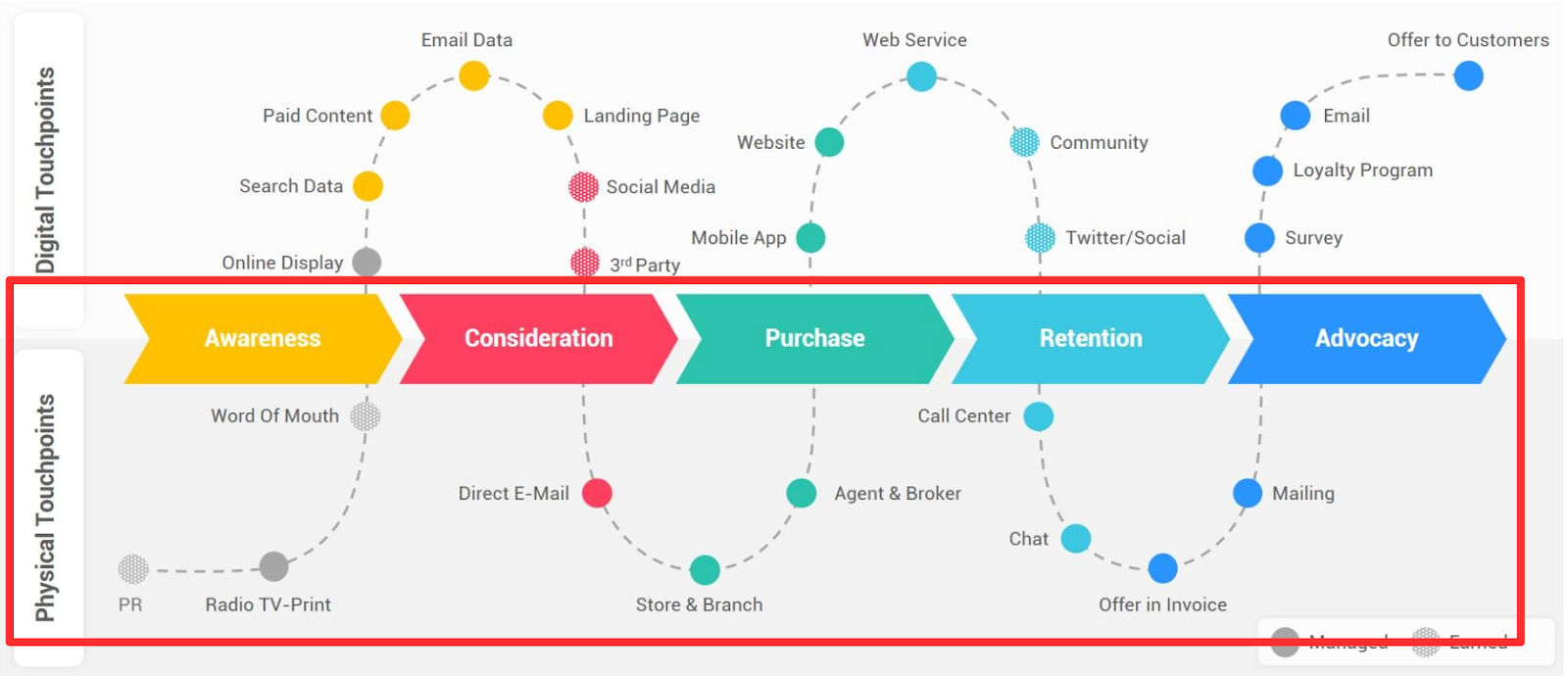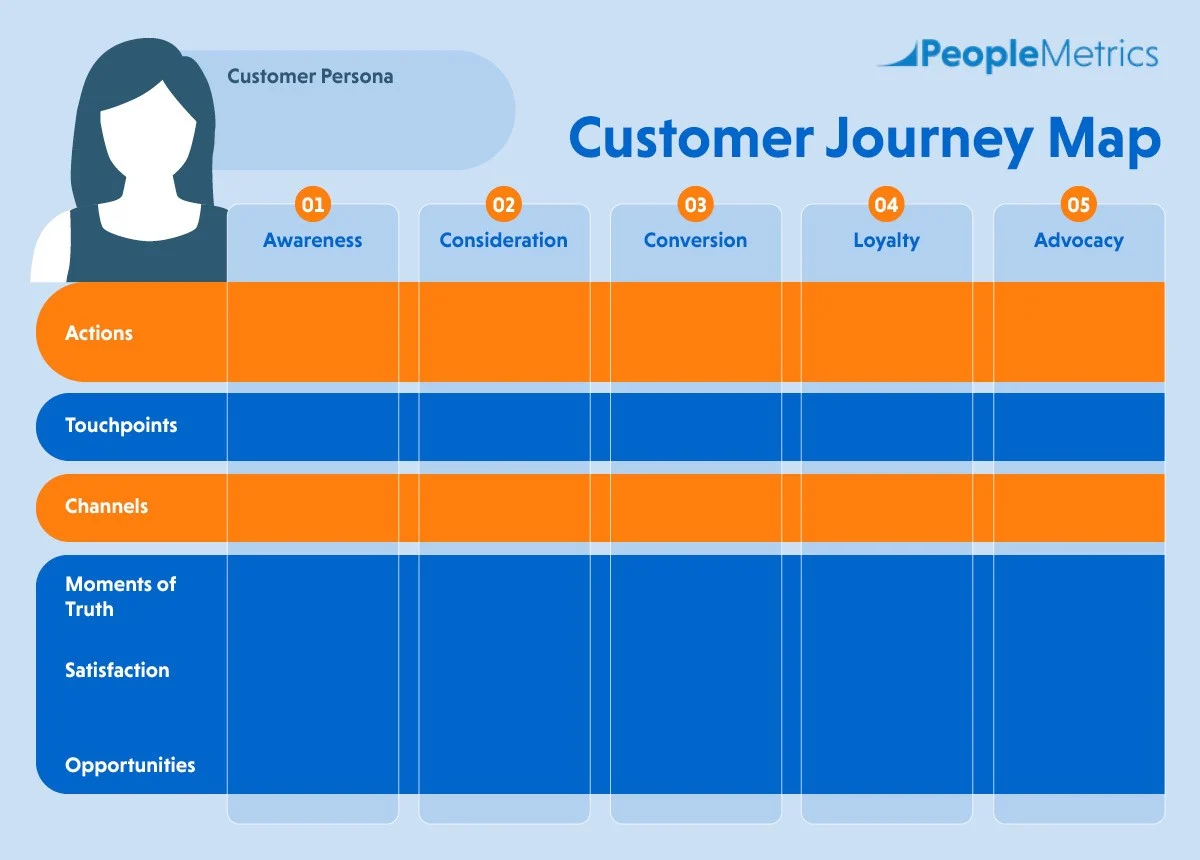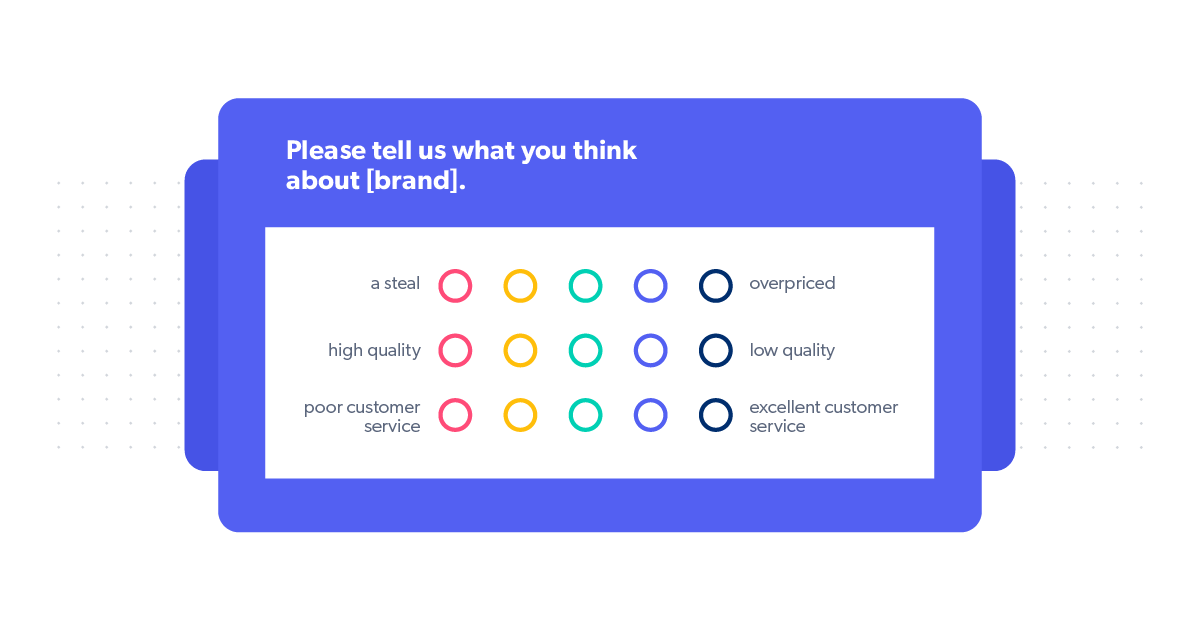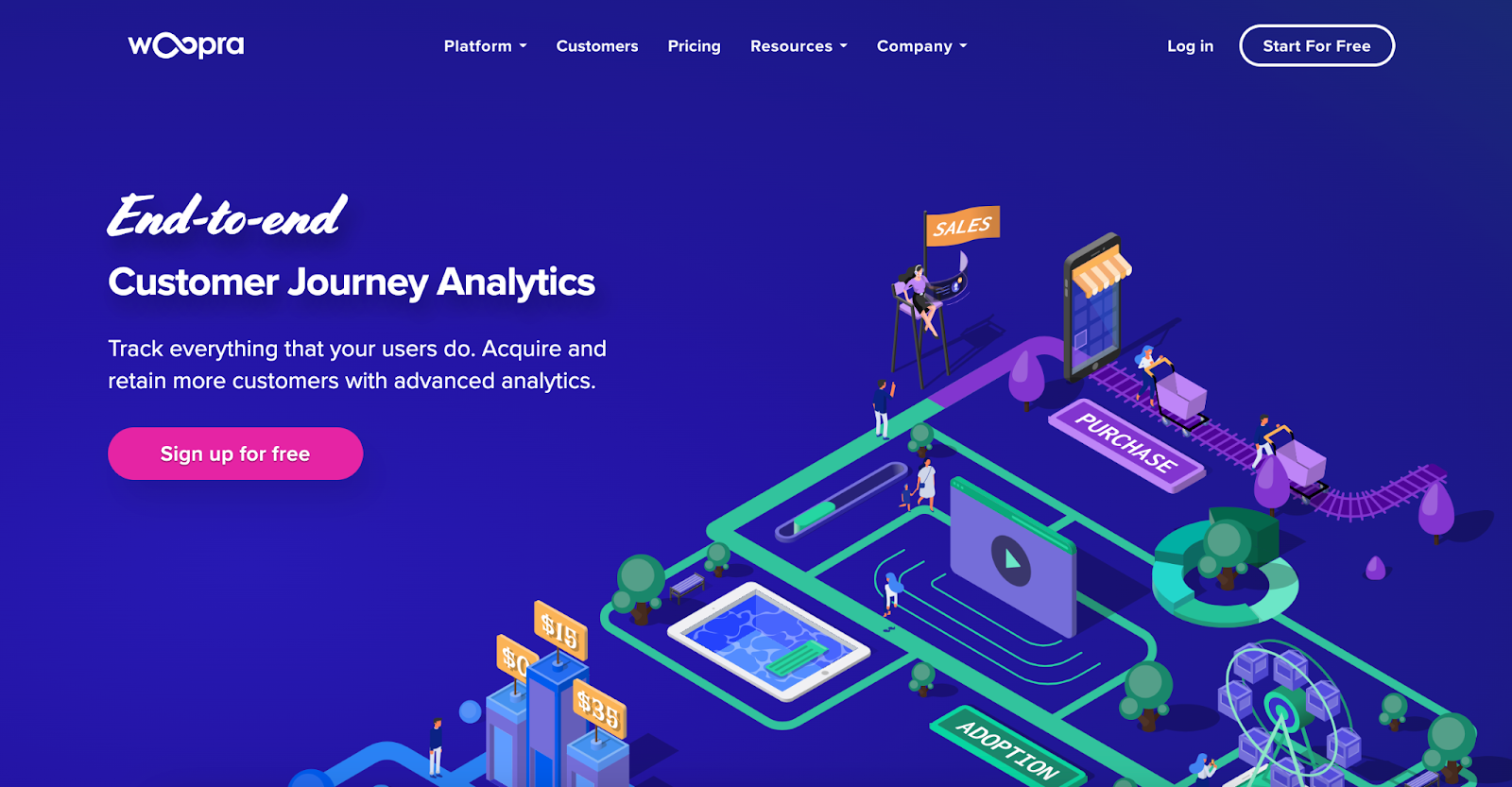Customer journey tracking is a powerful way to gain a comprehensive understanding of the customer experience and unlock the potential for growth and success.
Understand what, why, and how it works.
Understanding Customer Journey Tracking
Before diving into the benefits of customer journey tracking, let's first make sure we're all on the same page. What exactly is customer journey tracking and why is it important?
Customer journey tracking is the process of tracking and analyzing every touchpoint that a customer has with your business, from initial awareness to post-purchase follow-up.
![]() Source: Pathmonk
Source: Pathmonk
This tracking is done across multiple channels, including online and offline, and provides valuable insights into how customers interact with your brand throughout the entire customer journey.
Every customer journey is unique, and understanding the different paths that customers take to make a purchase is crucial for businesses to create successful marketing strategies.
By tracking and analyzing customer journey metrics, businesses can gain a deeper understanding of their customers, their needs, and their preferences to enhance virtually every aspect of their sales and marketing strategy.
What Is the Importance of Analyzing Customer Journeys?
The analysis of customer journeys is vital for understanding customer behavior and designing a more successful marketing campaign.
By having a complete understanding of what drives customers to make purchases, businesses can make more informed decisions and adjust their marketing efforts accordingly.
With a customer journey mapping tool, businesses can identify pain points or moments of truth during a customer interaction.
Pain points are areas where customers may be experiencing frustration or difficulty, while moments of truth are points in the customer journey where customers make key decisions about whether to continue engaging with a business or not.

By identifying customer pain points and moments of truth, businesses can make targeted improvements to their user experience, which can result in increased customer satisfaction and loyalty.
Key Components of an Effective Customer Journey Map
When it comes to successful customer journey mapping, there are a few key components that must be taken into account. These include:
- Clearly defined customer personas: Customer personas are fictional representations of your ideal customers. They help businesses understand the customer needs, preferences, and behaviors of their target audience.
- A comprehensive list of touchpoints across each marketing channel: Touchpoints are any interaction that a customer has with your business, including website visits, social media interactions, and in-store visits.
- Identification of moments of truth and pain points: As mentioned earlier, moments of truth and pain points are critical points in the customer journey that can make or break a customer's experience with a business.
- Engagement mapping for each persona: Engagement mapping is the process of mapping out the touchpoints and interactions that each customer persona is likely to have with your business. By understanding the unique journey of each persona, businesses can create more targeted and effective marketing strategies to better address customer needs.
By taking these components into account and performing comprehensive customer journey mapping, businesses can gain a deeper understanding of their customers and create more successful marketing strategies that drive engagement and sales.
Identifying Customer Touchpoints
One of the major benefits of customer journey mapping tools is the ability to identify all of the touchpoints that a customer has with your brand. This includes both online and offline interactions.
By identifying these touchpoints with customer journey analytics, businesses can gain a better understanding of their customers and make more informed decisions about how to improve their overall experience.
Online Touchpoints
Online touchpoints in customer journey mapping tools can include everything from website visits and social media interactions to email communication and online purchases. These touchpoints provide valuable insights into what drives customers to make purchases and what leads to abandoned shopping carts.
 Source: Debutify
Source: Debutify
For example, businesses can use customer journey analytics to analyze website traffic to determine which pages are most popular and which pages are causing a potential customer to leave the site. They can also track social media engagement to see which posts are generating the most interest and which ones are falling flat.
In addition to tracking customer behavior, businesses can use online touchpoints to engage with customers and build relationships.
For example, they can use marketing automation to send personalized emails to customers based on their purchase history or offer special promotions to customers who follow them on social media.
Offline Touchpoints
Offline touchpoints consist of interactions that occur in person. These can include everything from store visits and product demonstrations to customer service phone conversations and product returns.
 Source: Debutify
Source: Debutify
Analyzing offline touchpoints with a customer journey mapping tool can provide important insights into your customer's overall experience with your brand.
For example, businesses can track how long customers spend in their stores and which products they interact with the most. They can also evaluate the effectiveness of their sales staff by tracking how many customers make purchases after receiving assistance.
Offline touchpoints in customer journey analytics also provide opportunities for businesses to create memorable experiences for their customers. For example, they can offer personalized product recommendations or host events that allow customers to try out new products.
Evaluating the Impact of Each Touchpoint
It's important to not only identify each touchpoint but also to evaluate the impact that each touchpoint has on the customer journey. This allows businesses to prioritize efforts to meet customer needs, improve customer satisfaction, and increase conversion rates.
For example, if businesses find that customers are frequently abandoning their shopping carts on their website, they may decide to simplify the checkout process or offer free shipping to encourage customers to complete their purchases.
Similarly, if businesses find that customers are frequently returning products in their stores, they may decide to offer more detailed product information or improve the training of their sales staff.
By evaluating the impact of each touchpoint with customer journey analytics, businesses can make data-driven decisions about how to improve their overall customer experience and ultimately drive growth while maximizing customer retention.
Creating a Customer Journey Map
Now that we understand what customer journey mapping is and how touchpoints are identified, it's time to dive into the process of creating a customer journey map.
A customer journey map is a visual representation of a customer's experience with a brand, from the initial point of contact to post-purchase follow-up. It helps businesses understand the customer's perspective and identify areas for improvement in the customer experience.
It is a crucial part of customer journey management.
Here’s a customer journey map example template that can be customized for tracking customer journeys.
 Source: PeopleMetrics
Source: PeopleMetrics
Setting Clear Objectives
Before beginning the customer journey mapping process, it's important to set clear objectives for what you hope to achieve. This could include anything from improving customer retention rates to increasing online sales.
Setting clear objectives will help you stay focused on what's important and ensure that your customer journey mapping is aligned with your business goals.
Gathering Data and Insights
Gathering customer data is the next step in successful customer journey mapping. Both qualitative and quantitative data should be collected from a variety of sources, including customer surveys, customer feedback interviews, and customer engagement tracking tools.
This data will help you understand your customers' needs, pain points, and expectations at each touchpoint in their journey.
Qualitative data can provide insights into the emotional customer feedback aspects of the customer journey, such as how customers feel about their interactions with your brand.
 Source: Bazaarvoice
Source: Bazaarvoice
Quantitative data, on the other hand, can provide statistical insights into customer behavior, such as how long customers spend at each touchpoint or how many customers abandon their shopping carts.
Visualizing the Customer Journey
The customer journey should then be visualized using a clear and easy-to-understand customer journey mapping. This map should include each customer touchpoint, moments of truth, and areas of opportunity for improvement.
A customer journey map can be created using a variety of tools, such as flowcharts, diagrams, or infographics. The key is to make sure that the map is easy to read and understand so that everyone in your organization can use it to improve the customer experience.
Identifying Pain Points and Opportunities
Finally, pain points and opportunities should be identified and addressed. These could include anything from checkout difficulties to a lack of user engagement on certain touchpoints.
Identifying pain points is critical to improving the customer experience, as it allows you to address the issues that are causing frustration or dissatisfaction.
Opportunities, on the other hand, are areas where you can improve the customer experience and create a competitive advantage.
By addressing pain points and capitalizing on opportunities, you can create a customer journey that is seamless, engaging, and memorable.
This can lead to increased customer satisfaction, customer loyalty, and advocacy, which are all critical to the long-term success of your business.
Implementing customer journey analytics tools and creating a customer journey map is only the first step toward understanding and improving the customer experience. Once a map has been created, it's important to implement customer journey analytics to track progress based on customer feedback and continue to improve to not only meet but exceed customer expectations.
Customer journey analytics software involves analyzing data from various sources to gain insights into how customers interact with a business. By tracking customer behavior patterns, businesses can identify areas for improvement and make informed decisions to better serve their customers.
Choosing the Right Tools and Platforms
Choosing the right customer journey analytics tools and platforms for analyzing customer data is crucial for obtaining accurate and insightful information on the customer experience. There are numerous analytics tools available, ranging from a free option like Google Analytics to a more advanced paid customer data platform like Woopra for end-to-end customer experience management.

Businesses must choose customer journey analytics tools that align with their goals and budget. It's important to consider factors such as ease of use, customization options, integration with other systems, and customer service.
Integrating Data Sources
All sources of customer data should be integrated to provide a comprehensive view of the user journey. This includes data from both online and offline sources, such as CRM systems, email marketing software, and social media tracking tools.
Integrating data sources can be a complex process, but it's essential for obtaining a complete picture of the customer journey. By combining data from various sources with customer journey mapping tools, businesses can identify trends and patterns that may not be apparent when looking at individual data sets.
Analyzing Customer Behavior Patterns
Finally, customer behavior patterns should be analyzed to understand what drives customer decision-making and how to best serve their needs. This includes analyzing everything from shopping cart abandonment to email open rates.
By analyzing customer behavior patterns, businesses can identify areas where customers are experiencing friction or frustration. This information can be used to make improvements to the customer experience, such as streamlining the checkout process or improving the design of marketing emails.
In conclusion, customer journey mapping is a valuable tool for businesses looking to improve their marketing strategies and customer satisfaction.
By understanding every touchpoint and analyzing customer behavior patterns, businesses can make informed decisions, improve customer service, and succeed in today's ever-evolving business landscape.
Implementing B2B customer journey analytics can be a complex process, but the benefits are well worth the effort. By gaining insights into customer behavior, businesses can make data-driven decisions that lead to improved customer satisfaction, greater customer retention, increased revenue, and overall customer success.


